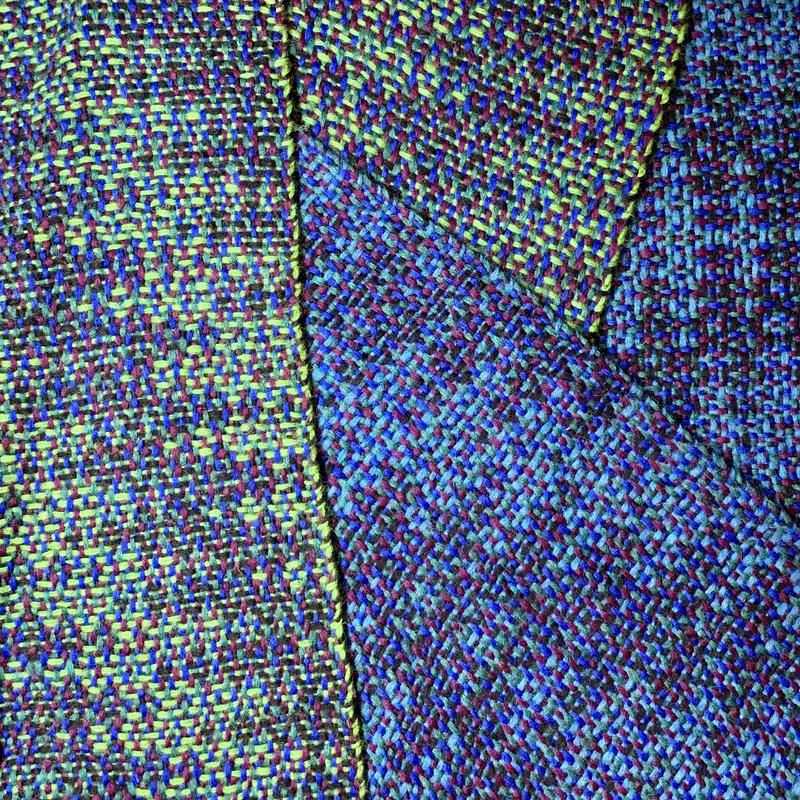Recently, I made a shawl for my sister in advancing twill with echo using an advancing point twill sequence in warp and weft. This shawl really got me inspired. For my sister, I used only two colors throughout the shawl. I wondered what it would look like using more. I did not have to wait long before the ideal opportunity for this experiment presented itself.

Indeed, when I realised my husband only owns one handwoven winter shawl, I had to rise to the occasion. He too was intrigued by my idea of applying the advancing point twill sequence with more colors. And as I can never own too many shawl myself, I decided to make us a matching pair.
Color picking time
It was no problem for me to decide on the colors of the warp. The blow yarn I have fallen in love with comes in shades of blue, purple and green that go wonderfully together. So, in the warp I alternated these three colors. Choosing colors for the weft was more of a challenge. I needed two colors for the weft: one for the main pattern and one for the echo pattern. I really like the addition of black in the weft, as I feel this makes the other colors stand out more.


For my husband, I decided to combine black and turquoise in the weft. For myself, I went back and forth quite a bit between black + bright pink and black + bright green. In the end, I opted for bright green, as I felt this would complement the blue, purple and green warp without overpowering it.
Adding a point to point twill
For my sisters shawl, I used a simple advancing point twill sequence in both warp and weft. This resulted in a diagonal stripe pattern. To put a little twist onto these new shawls, I mirrored the twill sequence halfway in the warp. This would give me a pattern of points throughout the shawls.


Subtle, yet bold
When I was weaving the first shawl, I feared my experiment was unsuccessful. The colors combined together wonderfully, but the pattern did not seem visible. Once I got the shawl of the loom, I was relieved to see a beautiful point pattern revealing itself. The pattern is clear from a distance, giving the shawl a bold look. Up close the pattern is less visible, but a lovely, subtle mix of colors remains.


